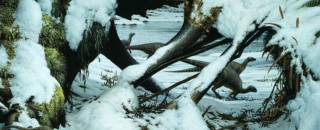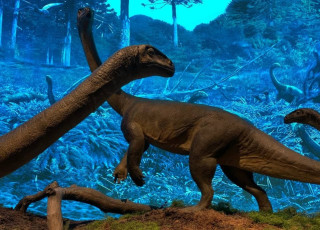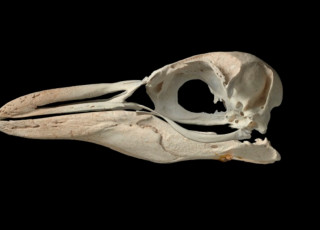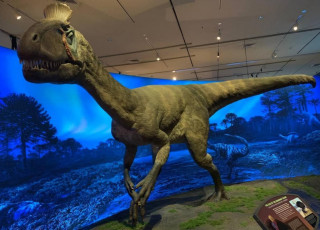Polar DinoFest: Holly Woodward
By Riley Black
There's more to dinosaur bones than what meets the eye. Even though paleontologists can tell a lot about the "terrible lizards" from the outside anatomy of their skeletons, some of the most potent clues about how dinosaurs really lived are found inside the microscopic structure of their bones - a science called histology.
Oklahoma State University paleontologist Holly Woodward is an expert on reading these hints found in fossil bones. Data from histological studies can help us learn how old a dinosaur was when it perished, whether the dinosaur was mature or a juvenile, how quickly the animal grew, and more. In fact, dinosaur bones can even help outline the swings of the polar seasons.
Dinosaur bones did not grow constantly throughout the year. Growth sped up and slowed down according to seasons, with lush, warm months spurring more growth and months will fewer resources - like winters or dry seasons - meaning slower or stopped growth. Now consider that polar dinosaurs often lived in environments when conditions were dark and relatively cool for months at a time. Dinosaur bones record these hard time as rings - or lines of arrested growth - preserved in the cellular structure. The rings record the seasons, and, if they were annual, gives paleontologists a way to estimate how old the dinosaur was.
The fossils Woodward has studied come from southern Australia, where the area that's now Victoria was within the Antarctic Circle. In particular, there's a small dinosaur from that area - Leaellynasaura - that has helped researchers understand what life was like there around 125 million years ago. "These animals were living in pretty unique conditions," Woodward says, and there's no evidence that the dinosaurs migrated elsewhere. The dinosaurs stayed here through the harder months, the local conditions affecting their growth. Each bone is a time capsule from that particular time and place. By zooming in close, paleontologists can assemble a much more detailed view of how dinosaurs coped with extreme conditions.
Click Here to Explore More of NHMU's Polar DinoFest
Riley Black is the author of Skeleton Keys, My Beloved Brontosaurus, Prehistoric Predators, and a science writer for the Natural History Museum of Utah, a part of the University of Utah in Salt Lake City. Our mission is to illuminate the natural world and the place of humans within it. In addition to housing outstanding exhibits for the public, NHMU is a research museum. Learn more.



